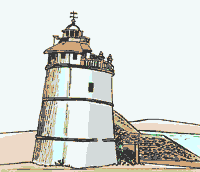
Dimdima
Online Children's Magazine from India

Dimdima
Online Children's Magazine from India
Area : Approximately 3,702 sq km.
Population : 13,43,998
Languages : Konkani and Marathi.
Capital : Panaji, a picturesque city on the banks of the river Mandovi, is one of the smallest state capitals in the country.
Literacy :
77% - one of the highest literacy rates in the country.
Location :
Goa is the smallest Indian state. Situated on the country’s west coast, Goa has a 105-km-long coastline. Maharashtra lies to its north and Karnataka to its south.
Important Places :
Margao, a thriving commercial metropolis, is the headquarters of South Goa.
Mapusa, has a popular Friday Market.
Vasco da Gama, named after the Portuguese seafarer, is a modern, well-laid-out city.
Mormugao, the country’s finest harbour on the west coast, is at the confluence of the Mandovi and Zuari rivers. The mechanical ore-handling plant at the harbour is the first of its kind in the country.
Velha Goa (or Old Goa) on the banks of the Mandovi, with its Portuguese-style churches and forts, is a World Heritage Site.
Ponda is famous for its temples.
Goa’s beaches, the Colva, Calangute and the Gasper Dias (Miramar) to name but a few, are known the world over for their scenic beauty.
Between the 3rd century B.C. and the 12th century A.D., Goa , a port-habitation on the river Mandovi, came under the sway of great dynasties like the Mauryas, Satavahanas, Rashtrakutas, Chalukyas and the Kadambas. Of these, the Kadambas ruled the longest. In their 300 years of rule, they made Goa a great centre for maritime trade. Thereafter until the 15th century, Goa was ruled by the Yadava, Bahamani and the Vijayanagara kings.
Around 1488, Goa was captured by the Adil Shahis of Bijapur.
This was the time when the Portuguese were searching for a base to gain control of the spice route from the east. The sea route to India was established by Vasco da Gama in 1498. In 1510, the Portuguese, under the command of Afonso de Albuquerque, conquered Goa, becoming the first Europeans to establish a territorial foothold in India, and also, the last to leave (in 1961).
During the Portuguese rule, Goa became an important centre for Catholic Christian missionaries and it was made an archbishopric with authority all over India, Mozambique and Japan.
Portuguese rule, however, was so oppressive and exploitative that during the 450 years of their rule, over 40 armed revolts took place.The first major attempt to drive the Portuguese out of Goa is said to have been made by Mateus de Castro, the first Goan bishop of the Roman Church.
In 1928, Tristao Braganza Cunha, known as the father of the nationalist movement in Goa, along with leaders like Purushottam Kakodkar, Laxmi Kant Bhembre, Divakar Kakodkar and Dayanand Bandodkar, formed the Goa Congress Committee to work for Goa’s freedom and integration with India.
On 18th June, 1946, Dr. Ram Manohar Lohia gave the call for civil disobedience at Margao. Despite prohibitory orders given by the Portuguese governor, thousands of people responded to his call. Goans to this day celebrate 18th June as Goa Revolutionary Day.
The liberation movement became stronger after Indian independence in 1947. The Portuguese refused a peaceful transfer of power to the Indian Union. Instead they resorted to repression and sent nationalist leaders into exile. On 17th December 1961, Indian troops moved into Goa and in an almost bloodless coup, succeeded in liberating Goa and the two other Portuguese territories of Daman and Diu as well.
Goa was incorporated into the Indian Union as a Union Territory first. It became the 25th state of the Indian Union on 30th May, 1987.
Goa's beaches, medieval churches and temples and its unique Indo-Portuguese ambience draws tourists in their thousands from the rest of India and abroad. Tourism in fact is one of Goa's major industries.
Rice is the staple food of all Goans and fish is relished by most. But Goa's speciality is cashew which like many other fruits was introduced by the Portuguese.
Churches
About 37 per cent of the population is Christian so there are churches and crosses at roadsides, everywhere. The state's most famous church is the Basilica of Bom Jesus, in Old Goa. It houses the miraculously preserved body of St. Francis Xavier, patron saint of Goa.
The most important temple and perhaps the most beautiful, is the Manguesh Temple in Mangueshi, in Ponda. Most of its buildings are eighteenth century including a seven-storeyed deepmal, a tower designed to be decorated with lamps on festive occasions. Such towers are a characteristic feature of Goan temples.
The Shantadurga Temple in Quepem is visited by both Hindu and Christian devotees. The image of the goddess is made of five metals and is one foot in height. She holds a trishul and a shield in her hands and is said to appear to her devotees in a dream whenever she wants anything to be done.
Forts
Aguada fort which contains as many as 79 guns is the best preserved of all the Portuguese forts along the coast of Goa. It is now used as a prison.
Towards the end of February there is a 3-day carnival. The festivities include parades, masquerades and dancing in the street.



Dimdima is the Sanskrit word for ‘drumbeat’. In olden days, victory in battle was heralded by the beat of drums or any important news to be conveyed to the people used to be accompanied with drumbeats.
Bharatiya Vidya Bhavan
K. M Munshi Marg,
Chowpatty, Mumbai - 400 007
email : editor@dimdima.com
Bharatiya Vidya Bhavan
505, Sane Guruji Marg,
Tardeo, Mumbai - 400 034
email : promo@dimdima.com
Dimdima.com, the Children's Website of Bharatiya Vidya Bhavan launched in 2000 and came out with a Printed version of Dimdima Magazine in 2004. At present the Printed Version have more than 35,000 subscribers from India and Abroad.